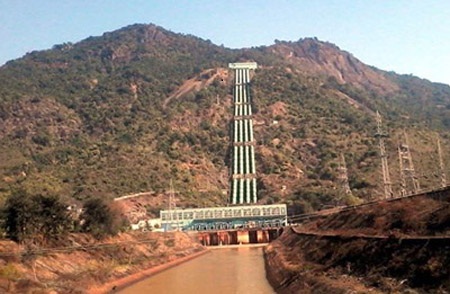Nabarangpur: Nabarangpur is primarily an agricultural district. More than 90 per cent of its inhabitants depend on agriculture for their livelihood. But insufficient irrigation facilities have been making an adverse impact on their progress since independence. It is evident from a survey that 73 per cent of the district’s population, mostly tribals, live below poverty line, with per capita income much below the state average.
Of the total 1.85 lakh hectares of cultivable land in the district, 1.56 lakh hectares are high and medium lands which depend on rain water as there is no perennial irrigation facility except for Bhaskal Medium Irrigation Project which provides irrigation to part of land in Umerkote Tehasil. Erratic, inadequate rains and unfavourable weather condition jeoparadise poor cultivators most of the time.
Ever since Upper Indravati Project was completed, under which all the water of Indravati with its tributaries like Padagada, Kapur and Muran had been diverted to an adjacent district, the downstream area of Nabarangpur district which once produced cash crops became dry and due to this the socio-economic condition of lakhs of people has been jeopardised.
Piecemeal schemes have failed to bring any permanent solution to the economic problems of the people. It is unable to help poverty stricken people whose main livelihood is agriculture. Drought, diseases, deaths, migration and exodus have become part of life of Nabarangpur district.
The Upper Indravati Project consisted of four rivers-Indravati, Padagad, Kapur and Muran. While Indravati originated from adjacent Kalahandi district about 45 km from the present dam site situated in Nabarangpur district, the other three rivers belonged to Nabarangpur and Koraput districts. Initially it was meant to irrigate 1,82,000 acres of land of Nabarangpur by constructing dams across Padagad, Kapur and Muran rivers. It could have served as a perennial source of water for the cultivators of the district. But later the decision to divert the project to an adjacent district deprived people here of that advantage.
Even though people here have vast cultivable land, they suffer due to lack of irrigation facility. The demand has been the government implement the Turi-Guntat Medium Irrigation Project, Lower Bhaskel Medium Irrigation Project, Tel Integrated Project, Angi Medium Irrigation project besides a ‘scheme to provide irrigation from Indravati reservoir’. But these schemes are pending at different levels.
Turi-Guntat Medium Irrigation Project has been accepted by the Central Water Commission and most of the mandatory clearances have also been made. It is learnt from official sources that the Turi-Guntat Irrigation Project is an integrated diversion scheme. It envisages construction of two barrages one each across rivers Turi and Guntat. The Turi is a left tributary of the Indravati while the Guntat is a sub-tributary of Turi.
The project will provide irrigation to around 23,000 acres in 35 villages of Kosagumuda and Nabarangpur blocks of the district besides providing drinking water to people living in the command area of each barrage. Similarly, the proposal for implementation of Lower Bhaskel Medium Irrigation Project, Tel Integrated Project and Angi Medium Irrigation Project has remained in official files despite repeated demand from people.
